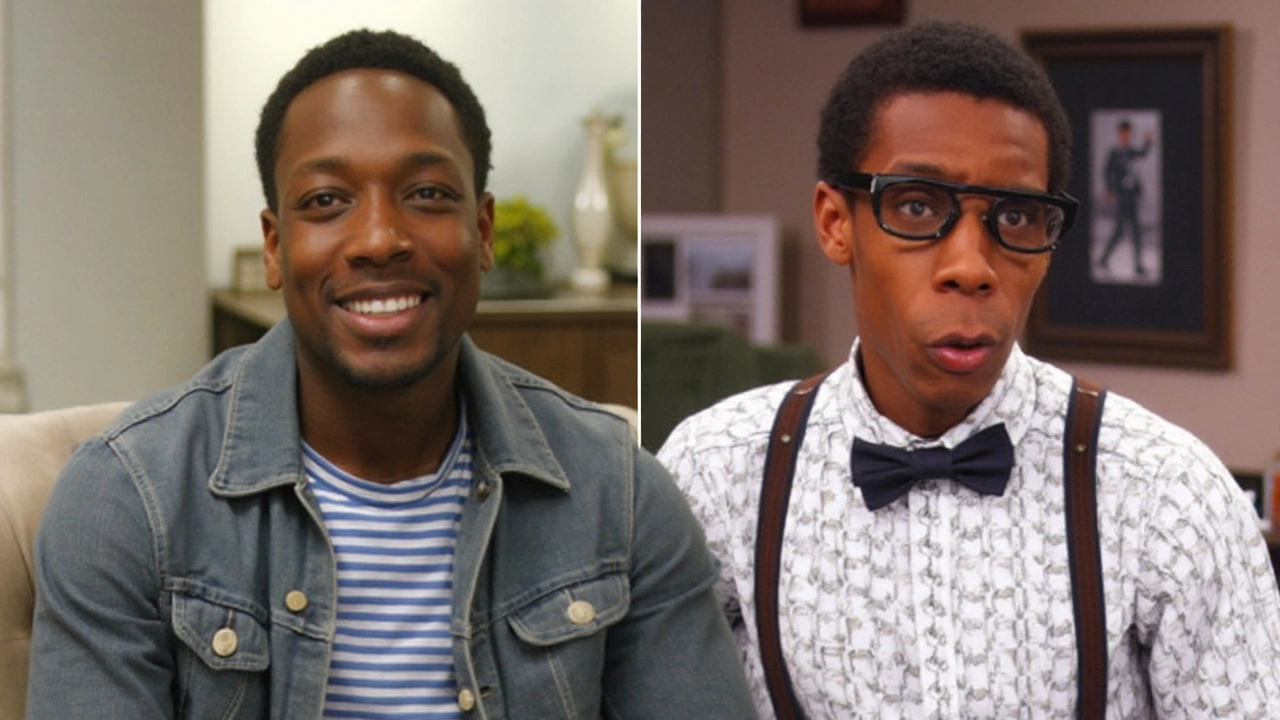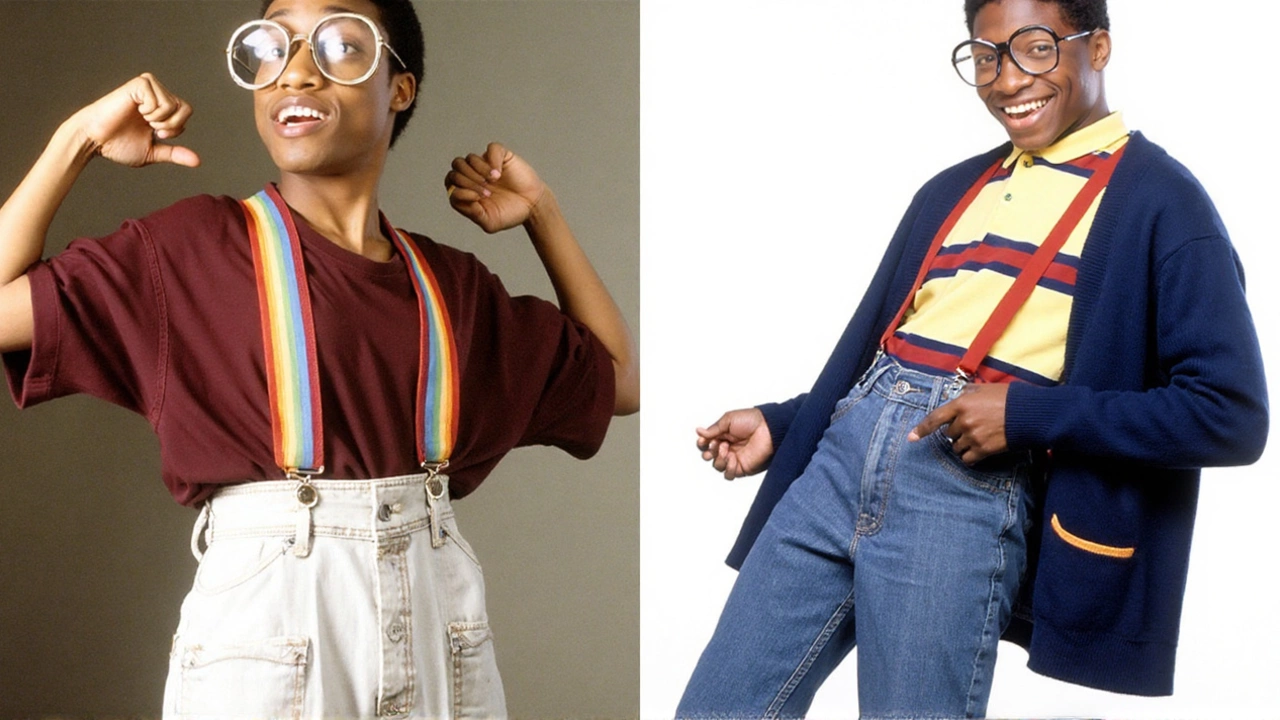Producers on Family Matters eventually banned jeans for Steve Urkel. Why? As Jaleel White grew up on camera, the character’s trademark tight pants began drawing attention in a way the show didn’t want. By the final season, White says, the note was blunt: no more jeans. The goal was to avoid an on-screen bulge that had become hard to ignore in the snug fit that once defined TV’s most famous nerd.
The wardrobe note that became a policy
In his memoir, Growing Up Urkel, and during a recent sit-down on The Breakfast Club, Jaleel White explains how a simple costume tweak turned into a production rule. Early on, producers told him to wear looser cuts. As he kept maturing, that wasn’t enough. By the ninth season, he says, the directive was clear: lose the denim. He recalls being told it was getting “a little awkward” to watch him in tight jeans.
White says those notes came straight to him, which he found uncomfortable. He thinks a conversation that personal should have gone through his family or a trusted adult, not as a blunt production memo. That nuance matters. On sets with child and teen actors, there’s usually a chain: costumers and producers work through guardians or studio teachers to handle sensitive changes. White’s memory highlights how that process can break down under the grind of a hit show.
Urkel’s wardrobe wasn’t an afterthought. It was part of the joke: suspenders yanking up high-water pants, buttoned shirts, bow ties, and big glasses that turned every entrance into a sight gag. The silhouette sold the laugh before a word was spoken. The catch is that costumes built for a preteen don’t always translate as a young actor’s body changes. What once looked goofy can start reading differently on camera.
Family Matters ran from 1989 to 1998, an era when Emmy nights, Friday night lineups, and live studio audiences shaped sitcoms. White entered as a kid and ended as an adult. The show had to protect a character built on innocence while the actor inside the clothes outgrew the original fit. Looser pants and a shift away from denim were a way to preserve the visual idea of Urkel without drawing attention to a reality the series didn’t want to center.
White says producers told him their main concern was how it played for viewers at home. Jeans were iconic to the look, but the fabric and cut made outlines obvious under stage lighting. So they ditched them. That choice reflects a larger on-set truth: the camera sees everything. Wardrobe teams constantly adjust fabrics, cuts, and layering to manage what the lens exaggerates.

Growing up on a sitcom set
White’s story lands in a familiar place for anyone who has watched young performers grow up on TV. Puberty doesn’t pause for plot. Shows adapt: different costumes, looser fits, darker colors that reduce contour, and character tweaks that soften the transition. Those moves aren’t about shame; they’re about tone. A family sitcom wants the audience focused on jokes and stories, not on the changes the actors can’t control.
There’s also the matter of how notes are delivered. Sets today are more formal about sensitive issues. Guardians, HR reps, and welfare workers are standard; some productions even designate specific contacts for issues involving minors. The idea is simple: protect a young actor’s dignity and create space for private solutions. In the 1990s, practices varied widely from show to show. White’s recollection suggests the system didn’t always route those conversations the most considerate way.
That makes his experience both specific and symbolic. Steve Urkel started as a one-off guest role and became the engine of the series after his first appearance exploded with audiences. The catchphrase—“Did I do that?”—turned into merchandising, guest arcs, and even the smooth alter-ego Stefan Urquelle to help the writers explore new storylines. With that level of cultural heat, there’s constant pressure to keep the character’s image consistent, even as the person behind him ages out of the original mold.
The show itself evolved, too. Family Matters began on ABC before moving to CBS for its final season. Tastes shifted, budget lines moved, and the cast had grown. By then, Urkel wasn’t just a character; he was a TV institution with a very specific look the audience could spot from across the room. Eliminating jeans was a practical fix: keep the spirit of Urkel without the unintended adult subtext that came with tight denim on an older actor.
From a craft point of view, wardrobe teams have a deep toolbox for moments like this. They choose fabrics that drape rather than cling. They adjust waist heights and pleats to change how clothing falls. They lean on darker or matte materials to avoid highlighting outlines under hot stage lights. And they stage scenes—through blocking and camera angles—to keep the attention where it belongs. None of this is unusual. It’s the everyday work of making TV feel effortless.
White’s decision to share the backstory adds another chapter to the long conversation about growing up in public. It’s not scandalous; it’s human. A kid becomes a teen, then an adult, and the costume that made him famous starts telling the wrong story. The show protected the character. The actor wanted the discussion handled with a little more care. Both can be true.
There’s also a lesson here about how pop culture freezes time. Fans remember the laugh, the high-water pants, and the clumsy charm. They don’t see the fittings, the notes, or the trade-offs made to keep the image intact. White’s account pulls the curtain back on those trade-offs without bitterness. It reads like a reminder that iconic looks have expiration dates—and that it takes actual people to manage the transition gracefully.
Three decades on, Urkel still looms large in TV nostalgia. The character reshaped Family Matters, boosted the show’s run, and turned White into a household name. Sharing why the jeans vanished in the final stretch is another piece of the puzzle. It’s a small, specific note that explains a bigger reality: on a set built on routine and repetition, the smallest costume choice can carry a lot of meaning.
White’s memoir and his radio interview don’t change the show’s legacy; they add texture to it. The laugh was real. So was the awkwardness. Between them sits the practical work of television—quiet edits to keep the tone right, protect the performer, and keep millions of viewers focused on the story they came for.
